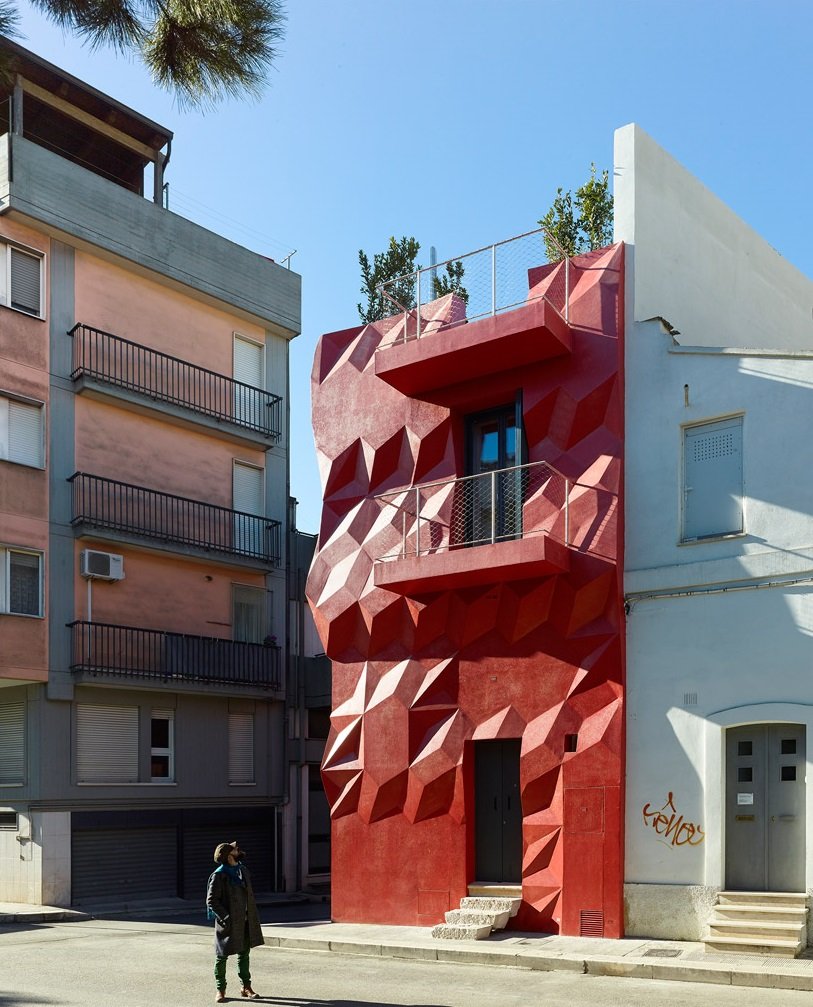#8176. Polygonal Red Facade: A Geometric Experiment in Urban Environment
Before us is a striking example of modern experimental architecture that stands out against the background of traditional urban development. The central element of the composition is a building with a red-terracotta facade, designed using a geometric fragmentation technique. The facade presents a complex system of triangular and multifaceted projections, creating an interplay of light and shadow that gives the building a sculptural, almost avant-garde character.
Particularly interesting is the contrasting juxtaposition of this avant-garde object with the surrounding buildings: to the left, a traditional apartment building with symmetrical balconies in peach-pink tones; to the right, a minimalist white building with simple lines. The bright red volume between them creates visual tension and serves as an accent element for the entire street.
The facade solution demonstrates a contemporary approach to parametric architecture, where computer modeling allows for the creation of complex geometric forms. The multifaceted surface not only fulfills a decorative function but also provides interesting natural lighting effects throughout the day—in the morning and evening, the facets create dramatic light and shadow patterns.
When designing your own home, a similar technique can be used more modestly—for example, by applying it to just a portion of the facade or the entrance area. It's important to consider that such a solution requires careful calculation of geometry and precise execution, as well as the selection of materials capable of emphasizing the volumetric plasticity. The monochromatic color scheme, as in this case, enhances the effect of the volumetric texture through natural shadows.
